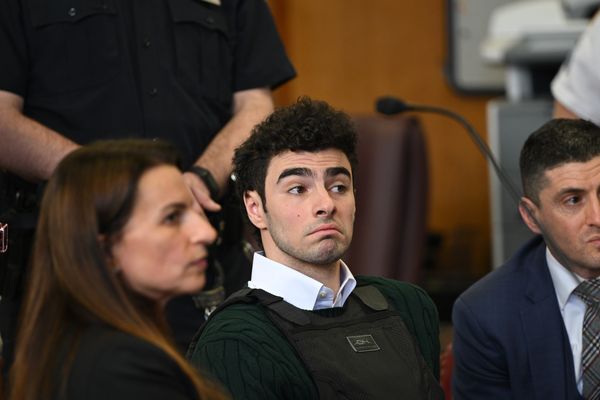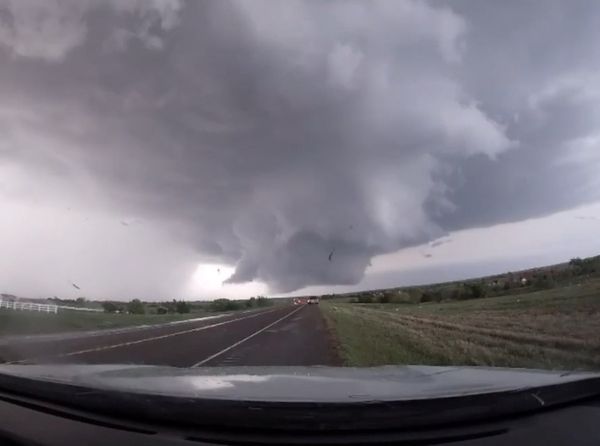
Every week we wrap up the must-reads from our coverage of the Ukraine war, from news and features to analysis, visual guides and opinion.
Friday marks four months since Russia’s president, Vladimir Putin, sent troops across the border in what he calls a “special military operation”.
‘Ukraine’s future is in the EU’
On Thursday, European leaders granted Ukraine candidate status, in a historic decision that opens the door to EU membership for the war-torn country and deals a blow to Vladimir Putin.
In Brussels, Jennifer Rankin covered the summit which culminated in the agreement from all 27 members of the bloc, nearly four months after the country’s president, Volodymyr Zelenskiy, launched Kyiv’s bid to join.
“We have been waiting for 120 days and 30 years,” Zelenskiy said, referring to the duration of the war and the decades since Ukraine became independent upon the breakup of the Soviet Union. “And now we will defeat the enemy … Ukraine’s future is in the EU.”
The European Commission president, Ursula von der Leyen, declared it was “a good day for Europe” while the French president, Emmanuel Macron, said it was a historic decision that sent “a strong signal towards Russia in the current geopolitical context”.
Earlier, Ukraine’s foreign minister, Dmytro Kuleba, said candidate status would “draw a line under decades of ambiguity and set it in stone: Ukraine is Europe, not part of the ‘Russian world’”.
Speaking to the Guardian ahead of the historically charged summit, Vsevolod Chentsov, the head of Ukraine’s mission to the EU, said Russia’s war had united Kyiv with the bloc and candidate status would signal to Russia it can no longer claim a sphere of influence over its eastern neighbour.
Crimes against civilians: documenting the scale of abuse in Ukraine
Since the start of the war the Guardian has documented crimes against civilians including torture, murder and sexual assault, gathering firsthand accounts from survivors and witnesses, and cross-checking them with information released by prosecutors.
Together they give a picture of how the violence and abuse has been an integral part of the Russian campaign since its very first days.
Guardian reporters Lorenzo Tondo, Emma Graham-Harrison and Isobel Koshiw spoke to Oleh Bondarenko, one of only three men who survived a torture camp in Motyzhyn, a small village just off the main highway linking western Ukraine to Kyiv.
Bondarenko said he had been beaten and left to die by Russian soldiers. He lost several teeth to Russian assaults, his torso is riddled with scars, and he may have suffered permanent damage to his spine.
He recounted how the Russian platoon led him blindfolded to a compound where the soldiers had established a grim routine for their captives. Each day civilians were badly beaten, their arms twisted and broken; then, as the moment to be murdered approached, they were shot in the hands or knees to cause maximum pain, then shot again in the stomach before finally being killed by a bullet to the back of the head.


From Zahaltsy, a small village in the Bucha district west of Kyiv, Pjotr Sauer spoke to the Ukrainians still finding bodies in former occupied villages outside the capital.
One man’s body was discovered by people ploughing a nearby field. The body was found next to a police checkpoint used by Russian soldiers during their occupation. “All signs indicate that this man was murdered by Russian soldiers. We have found more bodies around checkpoints in this area,” said Vyacheslav Tsyliuryk, the head of the local police unit. “We believe this person was heading towards his home when he was shot.”

The Guardian has photographed dozens of civilian cars in towns north of Kyiv, riddled with bullet holes as civilians tried to flee. The constant shelling meant they were buried in makeshift cemeteries around the towns and the location of their graves was later reported to the police.
“There are many burnt and disfigured bodies that are just impossible to identify,” said Vladyslav Perovskyi, a forensic doctor who has carried out dozens of autopsies on people from Bucha, Irpin and Borodyanka. “The face could be smashed into pieces. You can’t put it back together. Sometimes, there’s no head at all.”
Forensic doctors also told the Guardian they had found evidence some women were raped before being killed by Russian forces. Women across Ukraine are grappling with the aftermath of sexual violence perpetrated by Russian soldiers. Gang rapes, assaults at gunpoint, and rapes committed in front of children are among the grim testimonies collected by investigators.
Pjotr Sauer also covered the preliminary hearing in the trial of Mikhail Romanov, a Russian soldier charged with raping a Ukrainian woman and murdering her husband in a village outside Kyiv – the first of what could be dozens of such cases.
‘Tired of being scared’: Kyiv residents take steps towards normality
Pjotr Sauer reported from Kyiv on signs of normality resuming in the capital despite a brutal war that not long ago saw some of its bloodiest fighting just a few miles from the capital.
Anti-tank roadblocks have been moved aside, while families stroll around the city’s many parks. Terraces have started filling up, with well-dressed locals drinking Aperol spritz. Elsewhere a DJ plays techno tunes, so beloved in a city that has been proudly calling itself the new Berlin, as locals sell vintage clothes.
At the entrance of one restaurant, visitors are greeted with a stack of postcards proclaiming: “Russians, fuck off.” Almost every restaurant or bar in Kyiv flies the Ukrainian flag or hangs posters with support for the country’s armed forces. Anti-war and anti-Putin art can be seen on virtually every street corner.
But scratch below the surface and it quickly becomes clear that the far-reaching consequences of war still dominate virtually every aspect of life in Kyiv.


Fighting enters ‘fearsome climax’ in Donbas
The battle for two key cities in eastern Ukraine is edging towards “a fearsome climax” after weeks of steady gains made by Russian forces, an adviser to the Ukrainian president, Volodymyr Zelenskiy, told the Guardian.
Russia’s efforts to capture Sievierodonetsk and Lysychansk – the two remaining cities under Ukrainian control in Luhansk – have turned into a bloody war of attrition, with both sides inflicting heavy casualties.
Russia is now believed to control all of Sievierodonetsk with the exception of the Azot chemical plant, where hundreds of civilians and Ukrainian forces are trapped, echoing the earlier bloody siege of the Azovstal steelworks in the southern port of Mariupol.
Meanwhile, in the neighbouring Donbas region of Donetsk, regional governor Pavlo Kyrylenko maintained: “There is no place, no town in Donetsk region where it would be safe. It is extremely dangerous for residents to stay in any places of the region.”
Zelenskiy conceded that Russia’s goal was to “destroy the whole Donbas step by step”.

Our visual guide to the invasion is updated regularly and can be found here.







